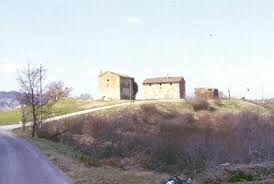Itinerario Ozzano dell'Emilia -Pieve di Pastino (sentiero CAI 801b)

L'antichissima Pieve di Pastino, che la tradizione vuole sorta nell’alto medioevo sui resti di un tempio pagano dedicato al dio Pan (dal quale deriverebbe il toponimo Pastino), è situata in punto dal quale si dominano la pianura e le vallate circostanti. A testimonianza oggi sopravvivono solamente un oratorio e un edificio cinquecentesco costruito con blocchi rocciosi derivati dalla demolizione della pieve; il degrado e la successiva scomparsa dell’edificio religioso furono causati anche alla natura del terreno su cui si fondavano le murature. Le argille, infatti, subiscono notevoli variazioni di volume in relazione al grado di umidità e sono spesso causa di irrimediabili lesioni alle strutture murarie portanti.
Sempre le argille hanno sicuramente rappresentato, in questo caso per i movimenti franosi che si innescano nei punti più ripidi, un fattore negativo per la vita dell’antico monastero camaldolese di Santa Cristina che sorgeva lungo la via del Pilastrino, abbandonato a causa dell’instabilità del terreno nel secolo XIII e definitivamente distrutto da una frana nel 1769. Una sorte analoga avrebbero subito, come già suggeriva nel 1782 Serafino Calindri, alcune delle leggendarie fontane che scaturivano a Settefonti e che diedero il nome alla località.
Per conoscere il percorso e le sue caratteristiche consultare il sito della Regione Emilia-Romagna:http://www.patrimonioculturale-er.it/webgis/
EG
The ancient Pieve di Pastino, which tradition says was built in the Middle Ages on the ruins of a pagan temple dedicated to the god Pan (from which derives the toponym Pastino), is located in the spot from which dominates the surrounding plains and valleys. Testifying today only survive an oratory and a sixteenth-century building constructed with blocks of rocks derived from the demolition of the church; the degradation and the subsequent disappearance of the religious building were also due to the nature of the land on which were based the walls. The clays, in fact, suffer considerable changes in volume in relation to the degree of humidity and often cause irreparable injury to the load-bearing wall structures.
Always clays have certainly represented, in this case by the landslides that trigger the steepest points, a negative factor for the life of the ancient Camaldolese monastery of Santa Cristina that stood along via del Pilastrino, abandoned because of the instability of the land in the thirteenth century and finally destroyed by a landslide in 1769. A similar fate would have suffered, as already in 1782 Serafino Calindri suggested, some of the legendary fountains that flowed to Settefonti and who gave the name to the locality.
To know the route and its features, please visit the region Emilia-Romagna's web site http://www.patrimonioculturale-er.it/webgis/


